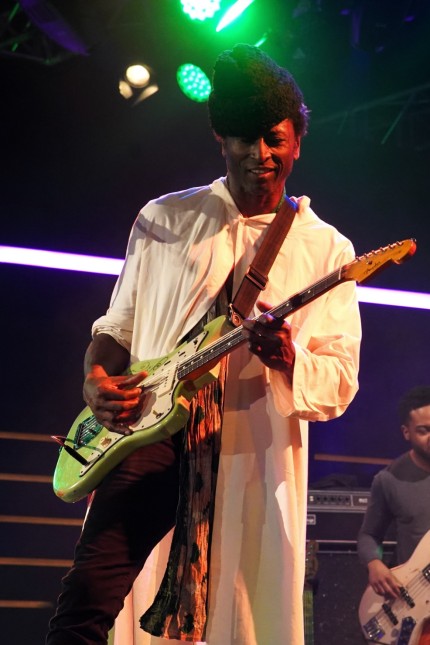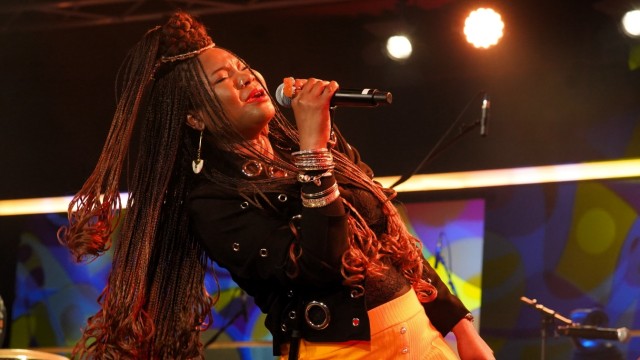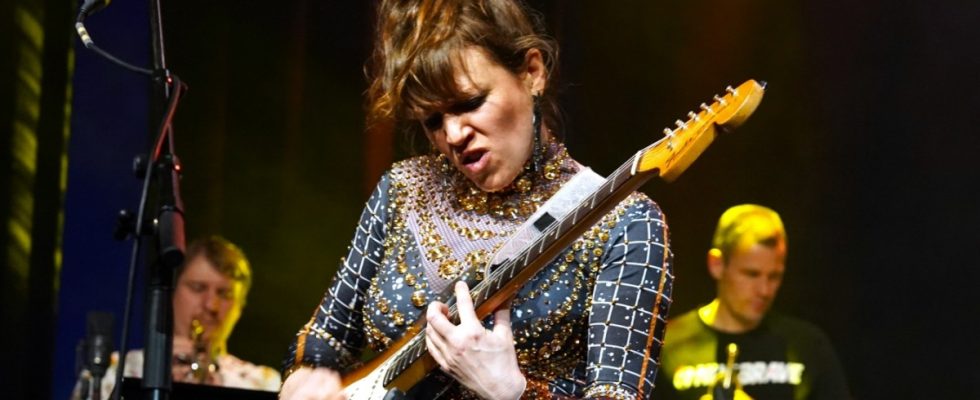Of course, jazz is also a matter of the head. In the end, it’s about feelings, as you could experience again at the 53rd International Jazz Week Burghausen. About the friends of the Italian pianist Simone Locarni about his victory at the 14th European Burghauser Young Jazz Prize, the already traditional festival teaser, in which soloists were admitted for the first time – and in which one of the other bands in the field of five had more than ever can win, especially the Norwegian one Bliss Quintet.
About the emotion that overwhelmed the almost 87-year-old grand seigneur of jazz bass Ron Carter at the end of his opening concert, knowing that his fourth appearance at Jazz Week would probably be his last. Or about the happiness combined with exhaustion of the Cuban cellist and singer Ana Carla Maza that she had won the audience on her side with her energy enough for three.
That was the most remarkable thing about this Burghausen Jazz Week: that the ideas and musical programs, but above all the feelings of the musicians, were almost always transferred to the audience. Simple, because they were honest and supported by the openness of jazz. This had not always been the case in recent years. “Soulless” gigs had crept into the festival, cover and show bands in which the jazz spirit was at best a means to an end. The competence of the organizing IG Jazz was in question and the significance of Bavaria’s oldest and most important jazz festival was at stake.
The Cologne a cappella quartet “Of Cabbages And Kings” contributed subtle sounds.
(Photo: Oliver Hochkeppel)
As this issue proved, the right conclusions were drawn. The program was colorful, but not populist. Attractive without trying to please everyone. And – the core task of a serious jazz festival – strives to convey the current status of the scene. Also on the big stage in the Wackerhalle. There, and probably not in the Stadtsaal as before, the British trumpeter Laura Jurd presented her eleven-piece “large ensemble” on the second day, which included the pianist (and her husband) Elliott Galvin (who won the young talent award here in 2013), the guitarist Rob Luft and others are some of the shooting stars of the vibrant London scene, reinforced by the amazing Ligeti string quartet.
It was a performance that demanded musical attention but was also encouraging, as was that of Christian Muthspiels afterwards Orjazztra Vienna. Friday evening also bore witness to the power of the current British scene, which has recently enlivened many European festivals. The frontman of the first band was the Swiss trombonist Samuel Blaser, but for his bow to his Jamaican colleague Don Drummond and for the corresponding ska and reggae-induced program “Routes” he brought in greats from the island such as the saxophonist Soweto Kinch or the singer Caroll Thompson. And then Keziah Jones, who comes from Nigeria but grew up in London, demonstrated even more convincingly how African rhythms and elements of European jazz can be integrated into singing and idiosyncratic guitar playing.

Afro-funk of the rhythmic special class: Keziah Jones.
(Photo: Oliver Hochkeppel)
When programming a festival, everything never turns out as planned. The Wackerhallen final on Saturday proved that you should at least fail interestingly and beautifully. After the already mentioned Ana Carla Maza, whose power as a living bouquet of flowers swirling across the stage somewhat obscured the fact that one would like to hear more of her certainly competent cello playing and somewhat more complex compositions than stripped-down salsa numbers, the collective proved itself Black Lives – From Generation to Generation as a festival disappointment if you wanted to find one.
Despite (perhaps because of) its star cast, the ensemble never came together as a unit in the stream of sight-read pieces contributed by so many. Especially in view of the serious, important cause (they were founded on the occasion of the death of George Floyd), the result was far too harmless, nice and old-fashioned. At the same time, the Stadtsaal, which focused on a stylistic statement and was always full of tension, demonstrated how it could be done differently Monika Roscher Big Band. All the more effective because it refers to the Cologne A Cappella Quartet, which sounds subtle at the other end of the dynamic scale Of Cabbages And Kings followed.
The trio of the “Next in Jazz” festival at the Stadtsaal were at least as exciting and interesting on the same stage: the 21-year-old trumpeter Emma Rawicz (also from London), who is incredibly mature in both her technique and her compositions, all sorts of things Rock from progressive to metal transferred into a jazz context, and a funny quartet to boot phalanx (with the unique maelstrom-guitarist Axel Zajac) and the Munich indie jazz performance women’s troupe SiEA honored the future-oriented title.

Traveled from Switzerland: Justina Lee Brown.
(Photo: Oliver Hochkeppel)
While we’re on the subject of praise: the blues afternoon was also outstanding because it pushed the boundaries of the genre. Especially with Justina Lee Brown with her magnificent mega voice that combines blues, soul and afro, where the great feelings were there again – especially with pieces about her dark childhood in Nigeria. Finally, the idea of IG Jazz was good and important, the festival around a “young” double concert in the JUZ youth center with the local band Feh and the Finnish one rosettes to complete. This should become a permanent fixture, just like Joe Webb, the festival discovery as a pianist and ideal jam session leader.
Of course – and this is perhaps the only stain on the almost flawless balance sheet, which with over 7,000 festival visitors almost reached the pre-Corona level again – had far too few prominent newcomers at his jam session. Almost all the musicians were accommodated in Altötting. This has to change again, in favor of the close contact with colleagues, journalists and audiences that is crucial for every festival. And in favor of the great feelings that you are already looking forward to. The video recordings of all concerts, which BR Klassik has now posted on its homepage, help to bridge the gap. One month in the original version, then another month in an optimized, edited version.

